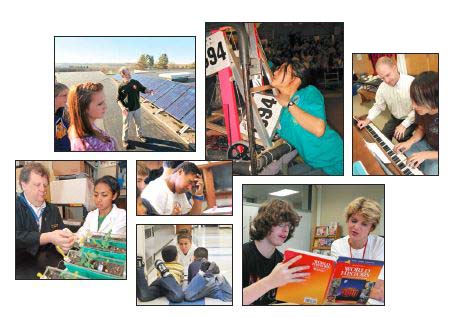

In this issue …
Special RA Preview - Commenting will be enabled following the 2015 NYSUT RA
Authors go beyond teaching the three R’s. Critical thinking and problem-solving for the 21st century learner means preparing students for a global society that has become defined by high speed communications, complex and rapid change, and increasing diversity. It means engaging students to use multiple strategies when solving a problem, to consider differing points of view, and to explore with many modalities.
This issue showcases eight different classrooms teaching critical thinking through inquiry and expedition, poetry and music. Authors investigate ways to make teaching and learning authentic, collaborative and hands-on. Students learn to problem solve by building working robots and go beyond rote memorization in math through gamification. Early learners use art to generate their own haiku, or journals to document their experiences with nature, and high school students learn earth science through outdoor investigations. Students in these classrooms are engaged in learning through Socratic dialogue, project based explorations, in-depth observation, critique and self-directed learning. It is a collection that demonstrates best practices for all learners who, as future citizens, will play a critical role in defining the knowledge society.
Download Educator's Voice VIII (pdf)
- Introduction /
Letter from NYSUT Vice President Catalina R. Fortino /
Table of Contents
- Inquiry-Based Learning: Preparing Young Learners for the Demands of the 21st Century
In this classroom early learners are challenged to explore a hands-on investigation in science. Using inquiry to inform the process, students are led through a carefully developed and exciting study on the life of worms. Across observations, rich discussions, and nature journals, a multi-sensory experience unfolds in one urban classroom.
- Developing Mathematical Thinking in the 21st Century
Critical and mathematical thinking are cultivated through an interactive process of discovery that uses gamification instead of rote memorization to teach higher order thinking skills in the secondary classroom. These authors explain how this approach can be used in varied contexts to increase mathematical understanding while increasing students’ enthusiasm for math.
- How Modes of Expression in the Arts Give Form to 21st Century Skills
Through interviews with kindergartners in New York City, plus accompanying stories, artwork, and haiku, we catch a glimpse of the creative thinking, interests, and discoveries of young learners. The teaching process is described in rich detail and highlighted with student artifacts. The author also documents connections with current theories about how children learn, the Common Core Shifts in English Language Arts, and the new National Common Core Arts standards.
- 21st Century Real World Robotics
Building robots with viable programming and color sense capacities becomes a reality in this project-based, interdisciplinary learning unit for middle-level students in Brooklyn. This school employs both team teaching and collaborative learning in its dynamic approach to teaching science and technology.
- "Caution, this will NOT be on the test!" Expedition Earth Science Prepares Students for the 21st Century
Expedition Earth Science takes students on motivating journeys where they explore the natural world through an approach that emphasizes both the process and the development of problemsolving skills. The authors explain how collaboration, literacy, interpersonal skills, and content knowledge can be taught in a real world context and adapted by others in various settings.
- Engaging Critical Thinking Skills with Learners of the Special Populations
In this classroom portrait on critical thinking with special populations, the author describes the importance of teaching all students to pose good questions and to learn how to make meaning from complex ideas. Through Socratic dialogue, project-based learning, and other methods designed to engage all students deeply in the learning process, this teacher helps all learners to be engaged.
- Music Performance Ensembles: A Platform for Teaching the 21st Century Learner
Performing ensembles give students opportunities to develop critical listening skills, to collaborate with team members, and to put critical thinking into action by making music. This author describes the importance of music education and some of the challenges faced by music educators in test-driven times.
- What is L.I.T.T.O.? Developing Master Learners in the 21st Century Classroom
L.I.T.T.O. stands for learning, independence, teamwork, time-management and ownership. This author-designed innovation teaches fifth graders to take charge of their own learning while the teacher integrates 21st century cognitive and affective skills across the curriculum.
- Glossary / Resources
- Call for Proposals for Next Issue
Videos